Seen from above, the French Caribbean islands of Guadeloupe look like the emerald wings of a butterfly.
Located within the lower crescent of the Caribbean archipelago between the islands of Montserrat and Dominica, these twin islands and a smaller cluster of satellite islets don’t just offer intrepid travelers spectacular white sand beaches.
They also have waterfalls, mountainous rainforests and cultural institutions dedicated to the islands’ pre-Hispanic peoples and subsequent slave trade.
From the main islands of Grande-Terre and Basse-Terre, it’s just an hour’s ferry ride to the tiny islands of La Désirade, Marie-Galante or the islands of Les Saintes to visit for the day trip overnight.
As an overseas department of France, Guadeloupe has long been a popular destination for French and other Western European tourists. Francophiles delight in speaking the lingua franca, French, while stopping at boulangeries and cafés to enjoy an espresso and croissant. (Visitors may hear more English since Norwegian Air started offering cheap direct flights from the United States in 2015.)
It’s a rich mélange of African, European, Amerindian, pre-Hispanic and Indian cultures, however, that lends Gwada, as locals call Guadeloupe, a certain “je ne sais quoi.”
Less developed than its French Caribbean cousins, St. Martin and Martinique, Guadeloupe is also more affordable than pricey St. Barths (Saint-Barthélemy).
Here are 10 things to do and see when you travel to this tiny French territory:
1. White sand beaches
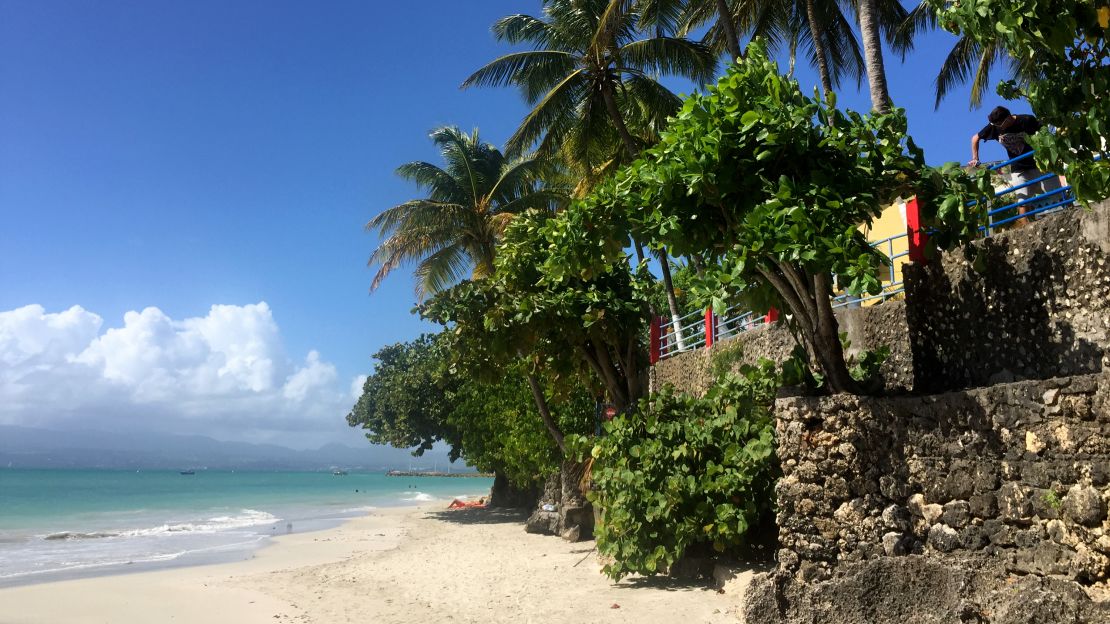
Less than 30 minutes from Guadeloupe’s main airport on the island of Grande-Terre are some of the island’s most beautiful beaches.
Shake off the last vestiges of travel at La Caravelle, a long stretch of beach open to the public on the grounds of an all-inclusive Club Med resort with windsurfing and kitesurfing schools and rentals. Day trippers can rent lounge chairs under the palm trees for 10 euros.
English is often spoken at beaches in the Grande-Terre towns of Sainte-Anne, home to postcard-perfect Sainte-Anne Beach, and Le Gosier, where La Datcha Beach has a slower vibe.
For a more French experience, ask locals for the turn-off to Petit-Havre, a small surfing beach frequented by locals.
Sainte-Anne Beach, les Hauts de Sainte Anne, Sainte-Anne 97180, Guadeloupe
La Datcha Beach, Le Bourg, Le Gosier 97190, Guadeloupe
2. Take in spectacular views of the Atlantic and Caribbean
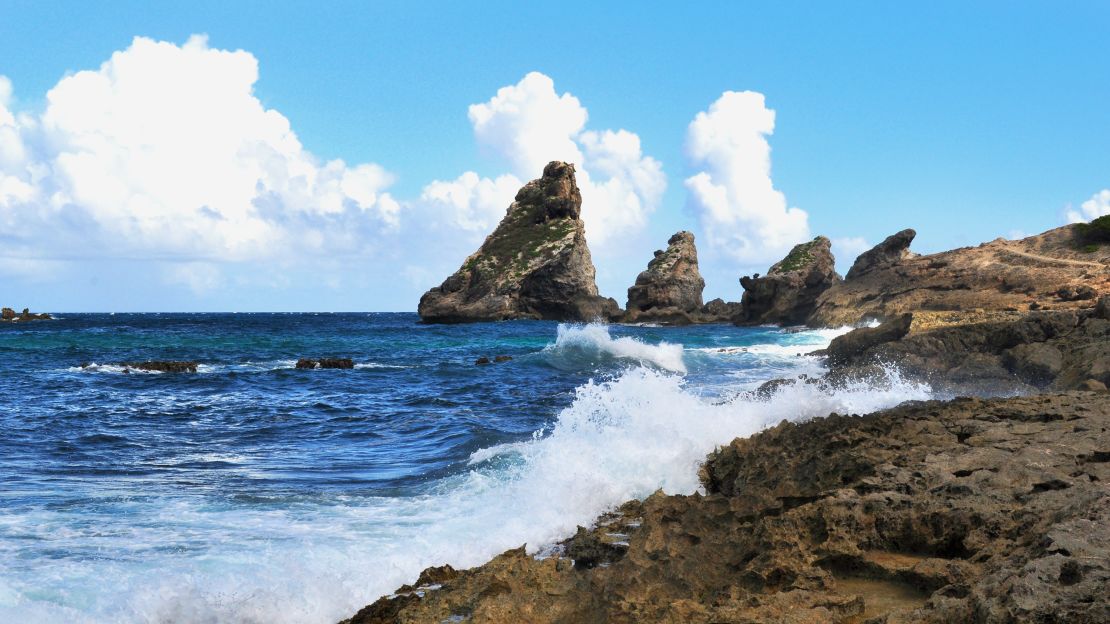
Stroll along the easternmost end of Grande-Terre, which leads up the cliffs of Pointe des Châteaux for spectacular views of the Atlantic Ocean and Caribbean Sea.
Head to Porte d’Enfer (“Gate of Hell”) to explore a trail leading to the Trou de Madame Coco (“Madame Coco’s Cave”), a grotto carved by the waves. Local folklore says it’s the home of a witch who made a pact with the devil.
One of the most spectacular trails on Basse-Terre is le Sentier de la Grande Pointe, located minutes from the town of Trois Rivières. Along the path, there’s a series of three waterfalls that spills into the sea near the black sandy Anse Duquéry Beach. Observant hikers can find pre-Columbian petroglyphs peering out from rocks along the trail, and there are many ruins of some of the island’s colonial-era sugar plantations.
(Pre-Columbian refers to the rich history, cultures and art of the peoples living throughout much of the Americas before the fateful arrival of Christopher Columbus, who first landed on Guadeloupe in 1493.)
Pointe des Châteaux, 6.8 miles east of Saint Francois, drive on D118 towards “Pointe des châteaux,” Saint-François 97118, Guadeloupe
Porte d’Enfer and Trail to Trou de Madame Coco, Route de Porte d’Enfer, Anse-Bertrand 97102, Guadeloupe
Le Sentier de la Grande Pointe and Anse Duquéry Beach. Turn off onto a road just after the village of Trois Rivières in the direction of Pointe à Pitre (after the petrol station), Trois Rivières 97114, Guadeloupe
3. Go to its national park – a giant rainforest

Guadeloupe’s National Park encompasses more than 74,100 acres of rainforest on the island of Basse-Terre, where visitors can hike up the side of la Grande Soufrière. It’s an active volcano that is also the highest mountain peak in the Lesser Antilles.
Rent a car at the Pole Caraïbes International Airport on Grande-Terre and head across one of two bridges on Guadeloupe that connect Grand-Terre to Basse-Terre.
It’s worth taking time on Route de la Traversée, the road that cuts across the national park. It’s a stretch of road with turnoffs to some of the island’s most accessible natural attractions. Bathe in a pool beneath La Cascade aux Écrevisses (“Waterfall of the Crayfish”) or take in the breathtaking beauty of the Carbet Waterfalls.
Stop off at La Maison de la Forêt (House of the Forest), where a canopy of majestic tropical chestnut, mahogany and fig trees will make travelers forget that they’re only an hour from the airport.
National Park of Guadeloupe, Montéran, Saint-Claude 97120, Guadeloupe; +590 590 41-5555
La Cascade aux Écrevisses, located in the National Park of Guadeloupe along the Route de la Traversée, Montéran, Saint-Claude 97120, Guadeloupe; +590 590 41-5555
4. Tropical wildlife at an underwater reserve
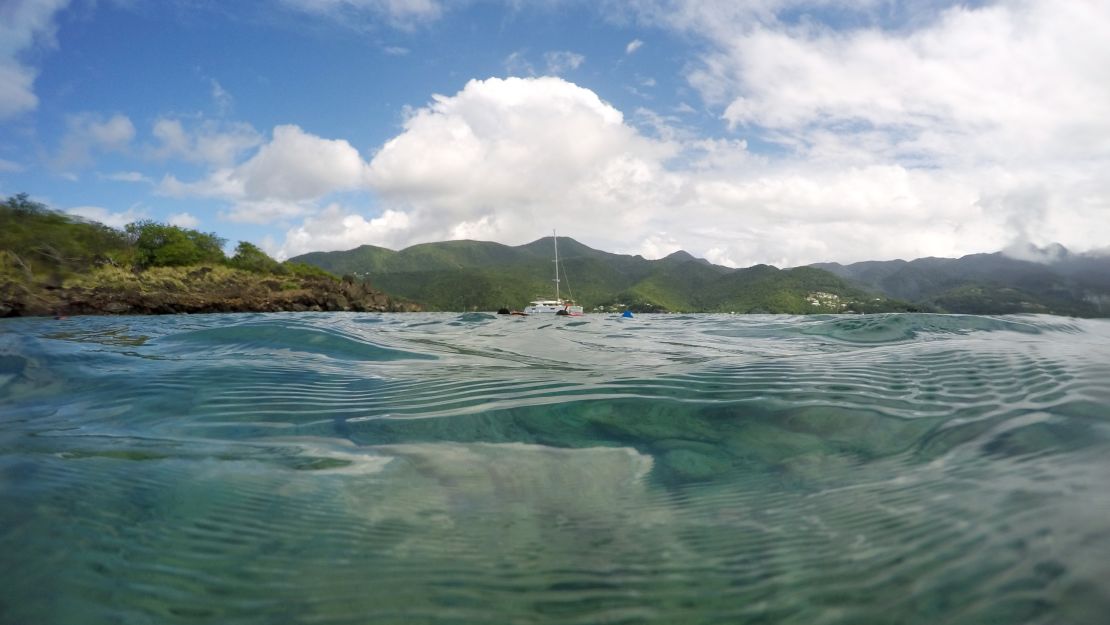
At the heart of the Jacques Cousteau Underwater Reserve, which is a part of Guadeloupe’s National Park, sits Pigeon Island.
In 1959, ocean explorer Jacques Yves Cousteau descended hundreds of meters in a small submarine in the waters around this small, rocky gem and was astounded by the biodiversity.
Guadeloupe’s National Park doesn’t offer an educational program for visitors to the underwater reserve, but watersport outfitters teach guests about protecting the fragile underwater ecosystems located throughout the park.
Just as Cousteau did over half a century ago, visitors can duck beneath the waves to snorkel or dive with hundreds of colorful species of fish, coral, eels, sea turtles and small sharks. To the east of the island, divers head to a spot called the Coral Garden to see a bust of Cousteau, which rests on the bottom of the sea. Made by French artist Albert Fage, the bronze bust features a painted replica of Cousteau’s signature red hat.
Gwada Pagaie and Caraibe Kayak rent kayaks and snorkeling gear for about 25 euros, while Plaisir Plongee Karukera (PPK) and Alizée Plongée offer a wider variety of watersport options.
Gwada Pagaie, located across from Malendure Beach, Bouillante 97125, Guadeloupe; +590 590 10-2029
Caraibe Kayak, also located across from Malendure Beach, Bouillante 97125, Guadeloupe; +590 690 7439-12
5. Learn about colonization and the slave trade
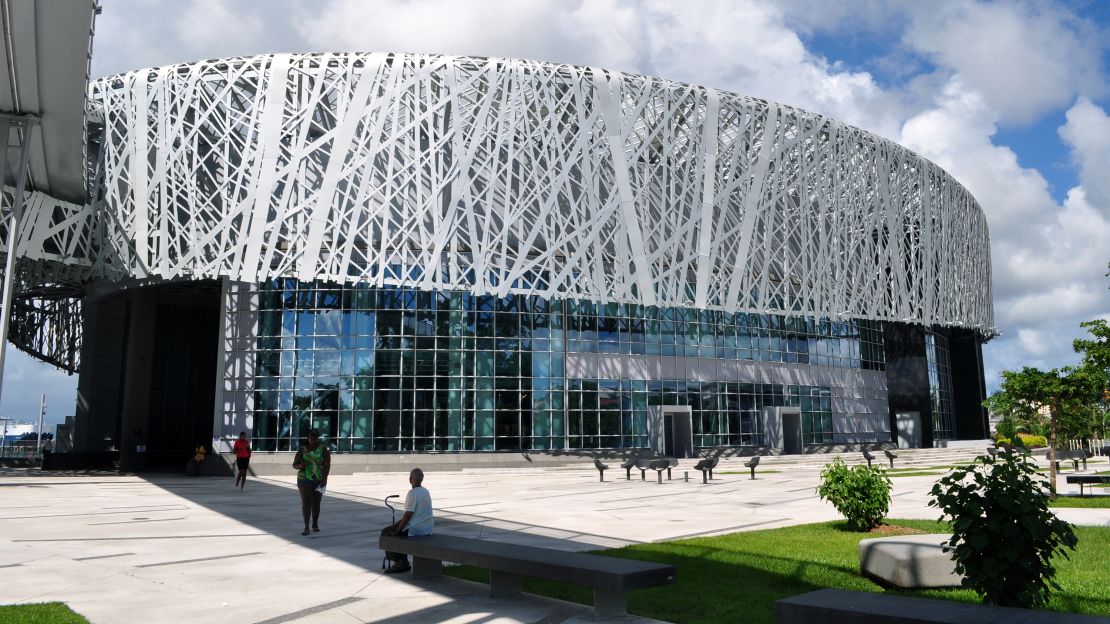
When Christopher Columbus first set foot on Basse-Terre in 1493, Guadeloupe’s only inhabitants were indigenous Carib peoples.
Although the Caribs successfully fought off the Spanish, who had tried to take Guadeloupe, they were no match for the French. In the 1600s, the French murdered many of the Caribs, and in 1674, the islands were annexed to France.
Over the next century, France and England jostled for control over Guadeloupe’s lucrative sugar trade. In 1759, the British captured Guadeloupe, but in 1763, the British government returned the territory to France in the Treaty of Paris.
Today, visitors can still see evidence of Pre-Hispanic people at Edgar Clerc Archaeological Museum on Grande-Terre or the Parc Archéologique des Roches Gravées on Basse-Terre.
In the second half of the 17th century, French colonists started importing enslaved Africans to work on sugar plantations across most of Guadeloupe’s islands. Slavery wasn’t abolished until 1848. After slavery ended, indentured servants from India were brought to work on the sugar plantations.
The legacy of the murder of indigenous peoples, African diaspora, slave trade and indentured servitude is a sobering part of Guadeloupe’s past. The Mémorial ACTe museum, which is dedicated to the memory and history of slavery, opened in 2015 on the site of a former sugar factory in Pointe-à-Pitre, the largest port city in Guadeloupe.
Mémorial ACTe is part of UNESCO’s Slave Route Project, and it’s an important contribution not only to Guadeloupe’s history, but to the global history of slavery and abolition.
Edgar Clerc Archaeological Museum, one kilometer north of Le Moule on La Rosette road (D123), Le Moule 97160, Guadeloupe; +590 590 23-5757
Parc Archéologique des Roches Gravées, Rue de la Dissidence, Trois-Rivières 97114, Guadeloupe; +590 590 9291-88
6. Traditional drumming in every village
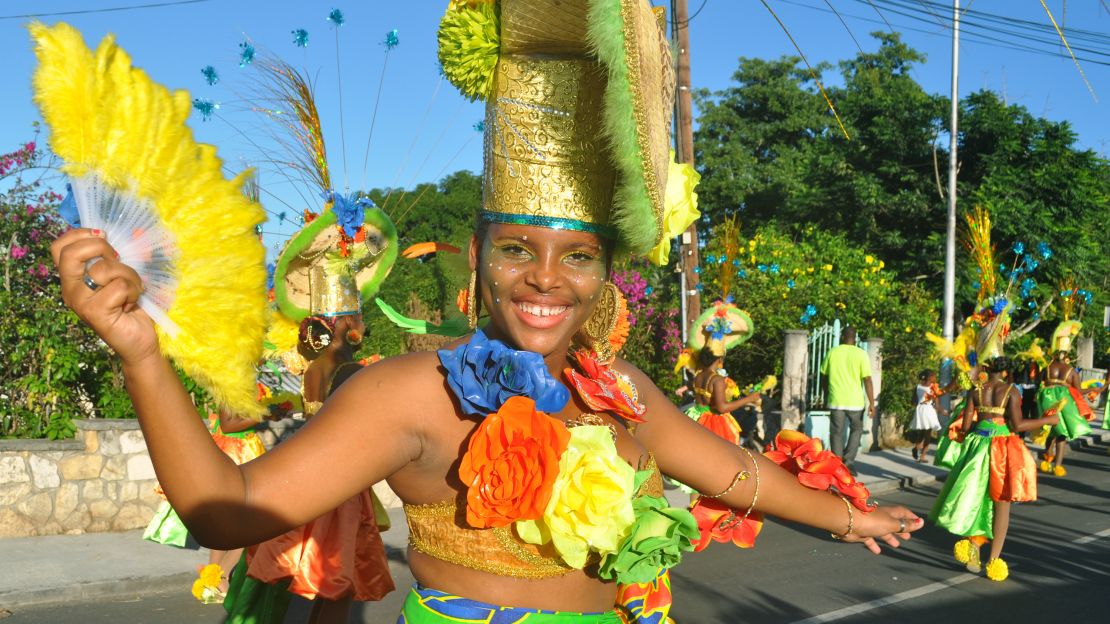
There seems to be a festival or holiday nearly every day on Guadeloupe, but the most famous of them all is Carnival, which is celebrated in most villages for two months every year in early winter.
Goziéval, which is what the village of Gosier on Grande-Terre calls its Carnival festival, is particularly vibrant, with parades that wind through the town.
Throughout the year, travelers can visit nearly every village to find music ensembles practicing for Carnival by playing a variety of traditional music styles such as Gwo’ka, Biguine vidé and Zouk.
Most Saturday mornings, Gwo’ka drummers play for a dancing, clapping crowd next to the main spice market in the city of Pointe-à-Pitre on Grande-Terre.
Goziéval, located in Gosier along route N4, Guadeloupe; +590 690 5235-50
Spice Market, Rue Frébault, Pointe-à-Pitre 97168, Guadeloupe
7. Eat French Créole cuisine next to the beach

Blending culinary styles from around the world, French Créole specialties include red snapper, dorado and other seafood practically swimming in a rich mélange of spices, including West Indian bay leaf, brown mustard seed and hot pepper.
Stop first at Ecomusée Créole de Guadeloupe, a museum and restaurant located on Basse-Terre that contains gardens brimming with local vegetables and herbs. Dedicated to traditional fare, the restaurant features dishes such as fresh fish cooked using the court-bouillon method, which quickly poaches the seafood. All entrees are served with edible flowers and herbs fresh from the garden.
Grab a table next to the beach at Entre Ciel et Mer on Grande-Terre or Le Rivage Restaurant on Basse-Terre to taste traditional dishes such as accras (deep-fried codfish fritters), langouste (lobster) and lambi (conch). Or dine at Ô’Métis on Grande-Terre, where the chef grills fresh fish over an open fire.
For turf over surf, La Porte des Indes on Grande-Terre serves chicken and goat Colombo, a dish inspired by indentured servants from India who arrived in the islands in the 19th century.
Ô’Métis Restaurant, Situe a Cote de la Clinique de Choisy, Montauban, Le Gosier 97190, Guadeloupe; +590 590 84-8228
Entre Ciel et Mer, Chemin de la Plage, Le Gosier, Guadeloupe; +590 590 84-5771
Le Rivage Restaurant, Plage de Salee, Bananier, Guadeloupe; +590 590 86-0240
8. Enjoy spectacular views from any room
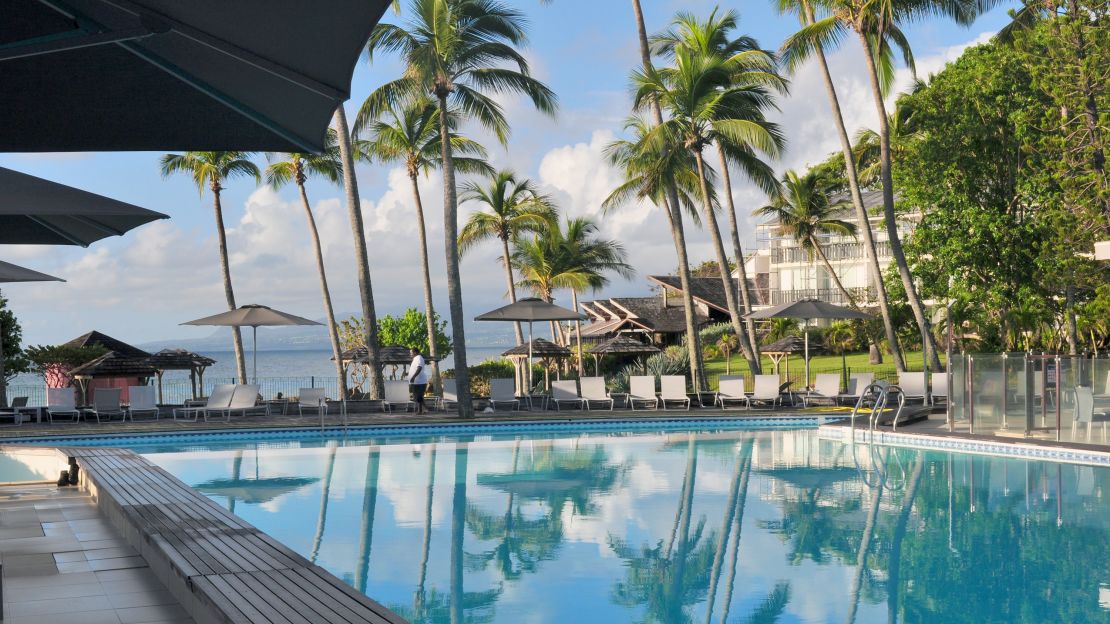
In Guadeloupe, it’s impossible to not have spectacular views of either the Atlantic Ocean or the Caribbean Sea from hotels such as La Cocoteraie, La Toubana Hotel & Spa and Le Creole Beach Hotel, all located on Grande-Terre. These hotels also have swimming pools, private beach access and on-site restaurants and bars.
Travelers looking for unique accommodations can reserve a seaside-facing room at Auberge de Vieille Tour, a hotel located in an 18th-century mill on Grande-Terre.
Tree lovers can head deep into Guadeloupe’s rainforest on Basse-Terre to one of Tendacayou Ecolodge & Spa’s three treehouses.
Set deep within the rainforest, the treehouses and ground-level bungalows are television and Internet-free, allowing guests to feel in harmony with nature. The ecolodge’s spa is set within the center of a tropical garden with waterfalls and warm pools, affording views of the Caribbean.
La Cocoteraie, Avenue of Europe, 97118 Saint-François, Guadeloupe; +590 590 88-7981
La Toubana Hotel & Spa, Sainte-Anne 97189, Guadeloupe; +590 590 88-2578
9. Explore five islands
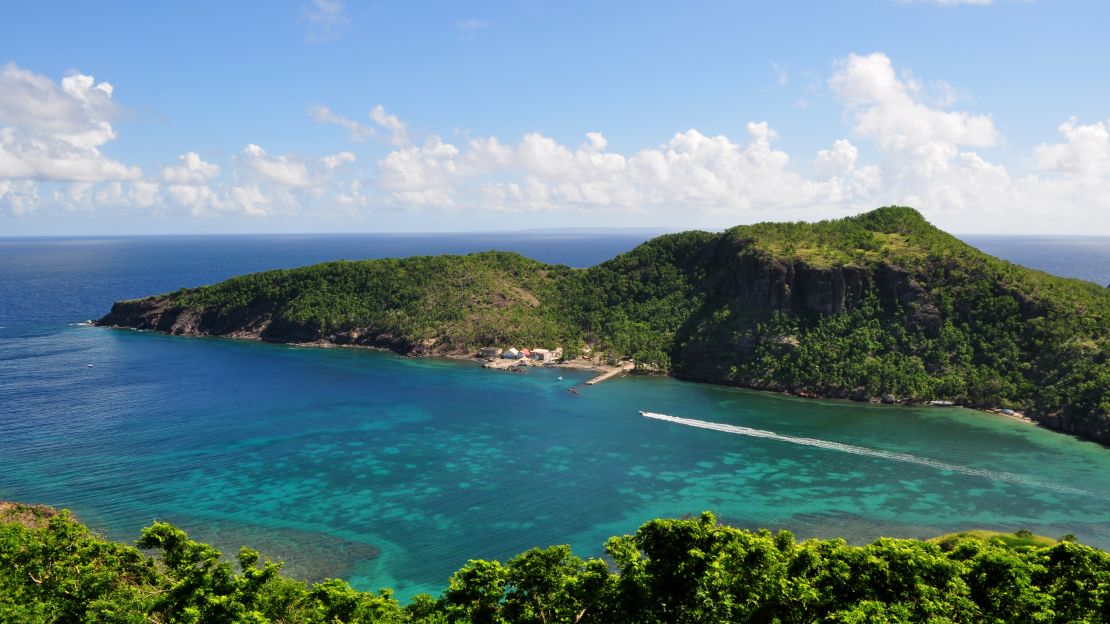
Although Grande-Terre and Basse-Terre are the most popular of Guadeloupe’s five islands, a visit would not be complete without exploring at least one of Guadeloupe’s three smallest islands to meander through local markets and fishing villages.
Rocks dating back 145 million years have been found on Désirade, making it the oldest sub-continental land in the Lesser Antilles. Travelers can trek through the island’s natural reserve that harbors rare endemic species such as the Désirade skink, the gaïac and the Lesser Antilles iguana.
Meanwhile, Marie-Galante, with its windmills and ruins of a sugar factory, is a visual study in the colonialist history of the island.
Finally, hike to the top of the two inhabited islands of Les Saintes, a small archipelago to the south of Guadeloupe, for unparalleled views over the Caribbean.
Wait for the ferry at Le Kanaoa, a hotel and restaurant next to the bay, with a ti’punch, a drink with lime, a spoonful of sugar and rhum agricole, a type of alcohol that distills fresh pressed sugar juice rather than fermented molasses.
Daily ferry service to Désirade, Marie-Galante and Les Saintes from Pointe-à-Pitre, Trois-Rivieres, Sainte-Anne and Saint-Francois.
Hotel Kanaoa, Anse Mirre, Terre-de-Haut 97137, Guadeloupe; +590 590 9951-36
10. Sail into a stunning sunset in Deshaies
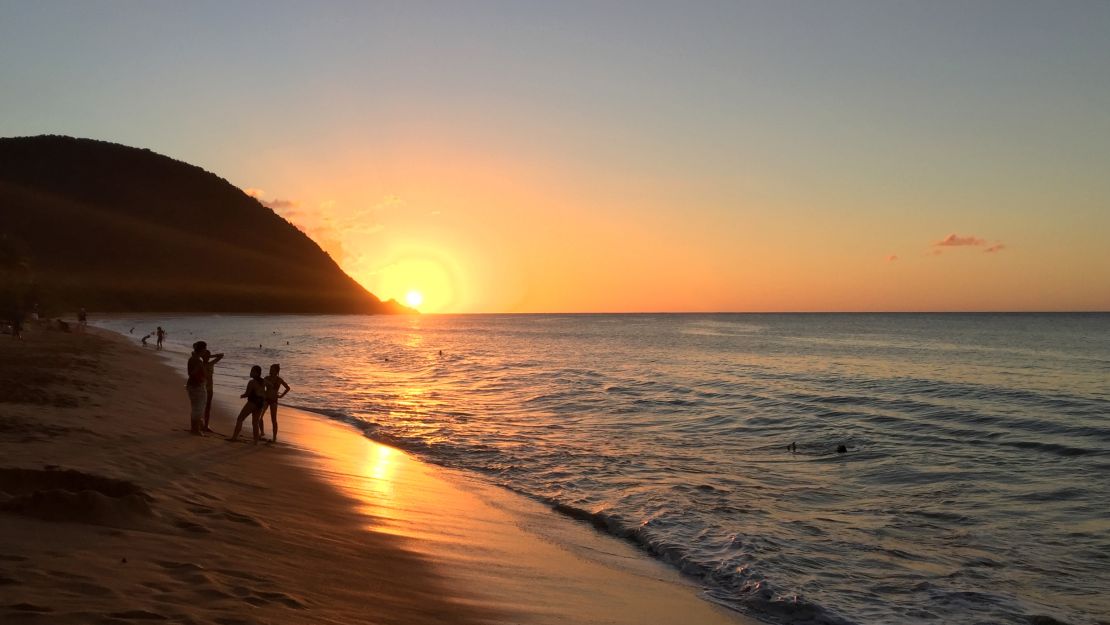
Spend the day at the Botanical Garden of Deshaies on Basse-Terre and stroll through seven hectares of gardens filled with flowers from around the world, including stunning hibiscus, orchids and bougainvillea.
At the end of the day, relax on Grand-Anse Beach or catch a sunset cruise aboard Keila Yacht to learn how to sail – quite literally – into the sunset. Set at the northwestern tip of the island, Deshaies offers some of the most spectacular views of sunsets in all of Guadeloupe.
Botanical Garden of Deshaies, Villers, Deshaies 97126, Guadeloupe; +590 590 2843-02
Keila Yacht, Deshaies Bay, Deshaies, Guadeloupe; + 590 690 4026-60
Melissa Banigan is a New York-based freelance journalist who has written for The Washington Post, NPR and BBC Travel, among other publications. She’s also the Founder and CEO of Advice Project Media, a nonprofit that offers journalism training for youth and women around the world.










